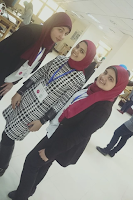Growing up in Pakistan and Bangladesh opened Saliha's (15) eyes to the sheer volume of waste being generated by these densely populated areas, leading her community to host some of the world's largest landfills. Determined to find a solution to cut down on non-biodegradable waste, Saliha turned to a common personal hygiene item: sanitary pads. With the local economy booming with the sanitary industry, she knew it was only a matter of time before landfills would become overwhelmed with these products, which contain plastics and harmful chemicals. So, Saliha created a safer, chemical-free option made entirely of plant materials that will degrade in just two year's time. She hopes her new "Shresto" pads will help more local women feel comfortable while also making the environment safer for everyone.
Airin (17) hails from Kerala, India, a region known for beautiful tropical beaches and agriculture, specifically tea, coffee, and spice plantations. Given his community's dependence on farming, Airin was intrigued by a question: could he create a better greenhouse that could produce extra crops sustainably and remain safe for the environment? For his project, he created a greenhouse that recycles 100% of the carbon dioxide it produces. His design proved successful, quadrupling crop yields while also using less power, water, and money. Airin believes his greenhouse can help Kerala farmers increase their harvests and income while sparing the local air from pollution.
In Shanghai, where temperatures can drop severely in winter due to Siberian winds, pipes can often freeze and burst, disrupting the community's access to water for hours or days at a time. While identifying a frozen pipe before it bursts is one path to solving the problem, Ying (17) realized it was more important to identify a pipe that was about to freeze and adjust water temperatures before they become critical. She set herself the task of creating an engineering solution to monitor local pipes that can automatically send electrical currents to adjust water temperatures as needed. Ying hopes her design will help her local community avoid plumbing disasters during the coldest time of year.
AFRICA AND MIDDLE EAST
Rolin (15) of Cameroon is passionate about science and wants to modernize his rural community, which is located 20km from the capital of Yaoundé. In rural locations like Zamengoe, where he attends school, Rolin shook his head to still see so many people trekking miles to charge their cell phones. Even worse, many locals are still forced to rely on dangerous and expensive oil lamps to light their homes at night. Seeking a solution to keep his community connected to power without breaking the bank or causing fires, he built portable solar kits that are simple to construct and cheap to make. He even trained people in his town to create their own kits so they'll never go without basic power! He believes he can help more Cameroon communities enjoy energy safely while improving their quality of life with his new creation.

In Lusaka, Zambia, family involvement in local politics has made Mphatso (18) keenly interested in reducing poverty in his community. As Southern Africa struggles to recover from its worst drought in decades, farmers are seeing their crops destroyed due to El Nino weather changes, leading to famine for millions. Without crops, farmers can't make a living, making it harder than ever for them to pay for the farming supplies they need to keep their farms fertile and their families thriving. To help local farmers find low-cost, affordable solutions for pesticides and fertilizers, Mphatso investigated alternative ways of generating the supplies farmers need. He created a simple, portable production station that requires basic cooking materials like charcoal and local plant leaves from the ground. Based on his methods, Mphatso believes farmers can save hundreds of British Pounds in costs, saving ~50% on fertilizers and ~80% on pesticides to help them produce better, more abundant crops.
No More Thirsty CropsKiara (16) lives in Johannesburg, South Africa, which like other nearby countries, is suffering from the worst drought the region has seen in over 20 years. Kiara believes that a critical solution to long term water needs is a special material that can hold hundreds of times their weight in water while stored within soil. Typically, these materials are man-made and filled with harmful chemicals that are both non-biodegradable and too expensive for local farmers to afford. Kiara found an ideal material that won't hurt the budget in the simple orange peel, and through her research, she created a way to turn them into soil-ready water storage with help from the avocado. Kiara hopes this low-cost material can reduce juice manufacturing waste while helping local farmers save both money and their crops.
Himanshi (17) and Richa (17) of the science duo 'Higgs Bosons' live in Nairobi, Kenya. The pair know that like Nairobi, much of Africa is dependent on unreliable hydro-generated power. Alternative energies are expensive and hard to access, leaving many Africans struggling with a poorer quality of life and health care. Dedicated to careful research and answering life's problems with science, the students designed a new way to create power using an advanced 'periscope-derived energy device. A new take on solar and steam energy, this device channels heat from the sun through a convex lens, intensifying the energy received and using it to create steam in a nearby reservoir. Higgs Bosons believes this easy-to-assemble, affordable solution could be the answer to energy problems for communities across Africa.
In Cairo, Egypt, Sara (18), Nourhan (17), and Asmaa (17) were shocked to realize that a significant number of citizens suffer from disabilities yet receive little governmental support or resources to help improve their quality of life. In particular, people who are deaf and hard of hearing struggle to connect with the hearing community, who do not always have the patience to learn sign language. This trio worked together to create a glove that translates hand signals into letters and speech, helping the wearer to communicate more easily. The young women hope that their invention will be another powerful tool for people who are deaf and hard of hearing to navigate more easily through life.
EUROPE
Ilya (16) began exploring engineering and robotics at a young age in his home city of Moscow, Russia. When he saw a gap in affordable tools for people who are visually-impaired, he began creating a wearable 'radar' accessory that can identify nearby obstacles through vibration signals. After receiving feedback on his initial design from people who were blind or visually-impaired in his community, he created a second, lighter prototype that is even easier to wear. Embedded into a common baseball cap, this system alerts wearers to the specific direction of obstacles within 3.5m using gentle vibrations. This gives the wearer plenty of time to adjust their direction of movement, so they can safely reach their destination. Given its low production cost, Ilya hopes to see his device improve the quality of life for the visually-impaired in his community.
Tarik (17) and Amor (16), of Sarajevo, Bosnia, have seen first hand how massive floods throughout Bosnia in May 2014 caused harmful lead contamination in local soil and drinking water. Eager to find a cost-effective way to create clean water for growing crops using a cheaper material that's also close at hand, the pair discovered that the white mustard plant, which is native to Bosnia and Herzegovina, is especially talented at absorbing lead. The plant is also of course biodegradable, creating a simple and very accessible way for their community to make local water safe again.

A native of Istanbul, Turkey, Esra (13) was concerned about how difficult it can be for locals and visitors to access clean drinking water without worrying about lead contamination in highly industrialized areas. Most visitors are advised to drink bottled water, and to avoid getting tap water in their mouths when taking showers or brushing their teeth! Inspired to create a new filtering solution that can help people avoid this problem, Esra investigated the use of mussel shells as a filtering device. His work showed that mussel shells are ideally suited to absorbing lead from soil and water and plentiful. Luckily, they also cost very little. Esra hopes to introduce this filtering option to his local community to create clean water for everyone.
Alex (18) lives in Athens, Greece. Fascinated by the intersection between robotics, software design, and the internet, he wanted to create the ultimate solution to solving health problems "in the cloud." In thinking about who needs health care the most, he realized that many people can't afford to visit a hospital or are physically too far away to access quality health care. Particularly for critical situations where a patient needs surgical care urgently, Alex wondered: wouldn't the world be a better place if a surgeon could treat their patient safely from thousands of miles away? To solve this, Alex built a robot and manually coded software that could control the robot remotely from any internet-enabled device. Through software and mechanical engineerings, Alex has created a platform that enables medical professionals to help patients wherever they are in the world, at any time.
İlayda (15) and Ezgi (15) live in İzmir, Turkey. The 7.1 earthquake that hit Turkey in 2011 claimed over 600 lives, and local scientists predict that the next decade could bring even more damage as tension continues to build along the North Anatolian Fault line. Given that many of Turkey's buildings are older, scientists have appealed to officials to help the country retrofit its buildings and train city workers to handle a potential earthquake disaster that could claim thousands of lives. Inspired to help, İlayda and Ezgi sought an affordable way to retrofit local buildings in their community with an easily available material: aluminium cans. The pair designed a solution that can be used to fill traditional concrete walls, increasing their ability to absorb impact damage from 32% to 61%. The students look forward to helping their community stay safe should an earthquake happen in the future.































































